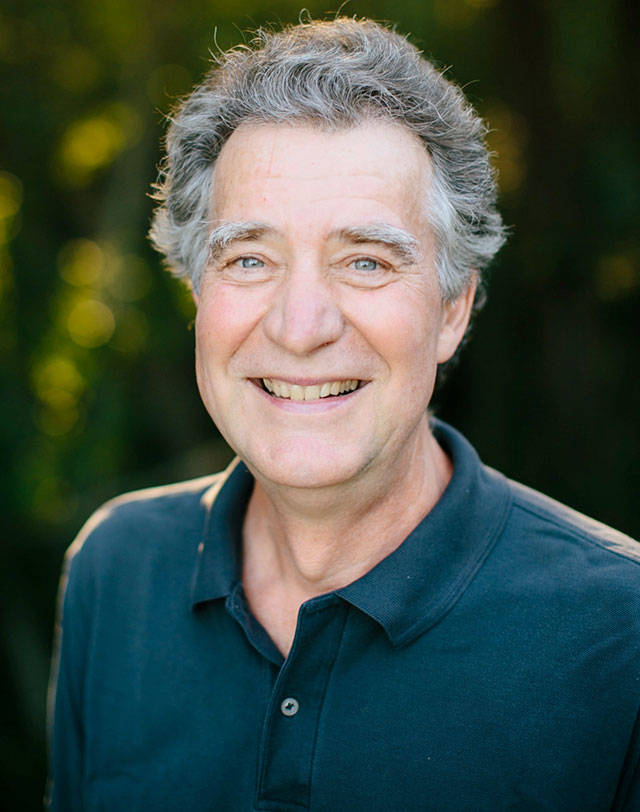Happy 50th Earth Day! (It’s next Wednesday, April 22.) The Earth is a most amazing planet with an astonishing history, wonderfully recorded in the rocks. Yet buried rocks contain energy-rich resources that, exploited by humans, have caused the climate crisis.
During the last half-century, our understanding of how the Earth works has been revolutionized by the development of the plate tectonic theory. Plate tectonics explains the formation of ocean basins, continents, mountain ranges, earthquakes, volcanoes, and the location of natural resources, as well as many other features.
One thing constant about the Earth’s processes is change. In light of human behavior of the last half-century, the appropriate time for humankind to follow suit and make a change in resource use is now. Here we focus on energy, realizing there are many other environmental issues deserving attention as well.
The energy associated with many of Earth’s processes is difficult to comprehend and can be hidden, although it has been apparent to those living in the Pacific Northwest. Since the inaugural Earth Day in 1970, the Juan de Fuca Plate has moved five to six feet closer to North America along Vashon’s closest plate boundary, the Cascadia subduction zone buried 30 miles beneath Vashon, mainly by gradually creeping along the megathrust fault. Occasionally, the plate boundary gets locked and snaps, causing earthquakes that quickly release stored strain energy. In 2001, all conscious residents of Vashon felt the ground shake during the magnitude 6.8 Nisqually event, and as much energy was released in 15 seconds as detonating 400,000 tons of dynamite. This event was located in the upper plate and small compared to the Cascadia magnitude 9 megathrust quake of January 1700 that released 1,000 times as much energy. Luckily, the last 12 of these megaquakes have occurred about every 642 years, so we must wait more than 300 years for the next one.
The Cascadia subduction zone also produces a volcanic arc with more than 20 active volcanoes. One of its most spectacular eruptions occurred in 1980 at Mount St. Helens, releasing as much energy as detonating 500 million tons of dynamite, or an average 10-day hurricane (or 2×1018 Joules Joules).
Of all of Earth’s processes, humankind has only figured out how to harness geothermal, water, and wind to generate a minor yet growing renewable fraction of our electricity needs. Geothermal energy has been sadly neglected yet has much potential, mainly due to the center of the Earth being white-hot, hotter than the surface of the sun at around 5,500 Kelvin.
In contrast to the above sources, the energy that humankind has figured out how best to harness results from light emitted by the sun. The bulk of this energy results from photosynthesis in biota that grew over the last hundreds of million years and occurs in buried rocks. In the last 50 years, humankind has consumed more than three times as much energy as that consumed in the 150 years prior to the first Earth Day from the burning of fossil fuels (coal, oil and natural gas). Using this energy has increased atmospheric CO2 from 325 to 415 ppm in the last 50 years, greatly contributing to the climate crisis, and creating a huge burden on future generations.
The time to transition away from fossil fuels to greener energy sources is long overdue. The generation of renewable electricity, from solar photovoltaics and other methods, now accounts for 2 to 3% of all global electricity consumption and is growing. It’s time to expand the use of renewable energy sources with lower carbon and environmental footprints than those of fossil fuels.
Fossil fuels are not the only problem needing attention — we need to correct all the negative impacts humankind has had on Earth’s ecosystems, including soil, air, oceans, aquifers, rivers, wetlands, grasslands, forests, and lifeforms. Humanity has altered more than 75% of the terrestrial surface, removing the diverse natural habitats needed for our survival. Humanity now moves more sediment and rocks than nature does!
We are, unfortunately, not able to celebrate Earth Day this year as we had hoped due to the COVID-19 pandemic. The pandemic has produced a steep change in life as we know it, yet has resulted in improved air quality, reduced greenhouse gas emissions, given us more time to interact with the environment, and has reduced seismic noise, making geophysicists happy. Unfortunately, these benefits may only be temporary and have come at great cost: tragic deaths, human distress, economic slowdown, and many municipalities curtailing recycling programs. Both the pandemic and climate crises threaten our health and security. Now is the time to change our relationship with the environment, and our current production and consumption habits, towards cleaner, greener, and more circular and sustainable economies, while keeping nature rich, diverse and flourishing.
Let’s make the best of these challenging times by making Vashon a more sustainable and resilient community, changing our behavior, and healing the Earth! The forthcoming Whole Vashon Catalog will provide a great resource with lots of ideas for healing the Earth. Will you join me in celebrating Earth Day every day?
Steve Bergman is a retired research geologist and resides in Ellisport.



